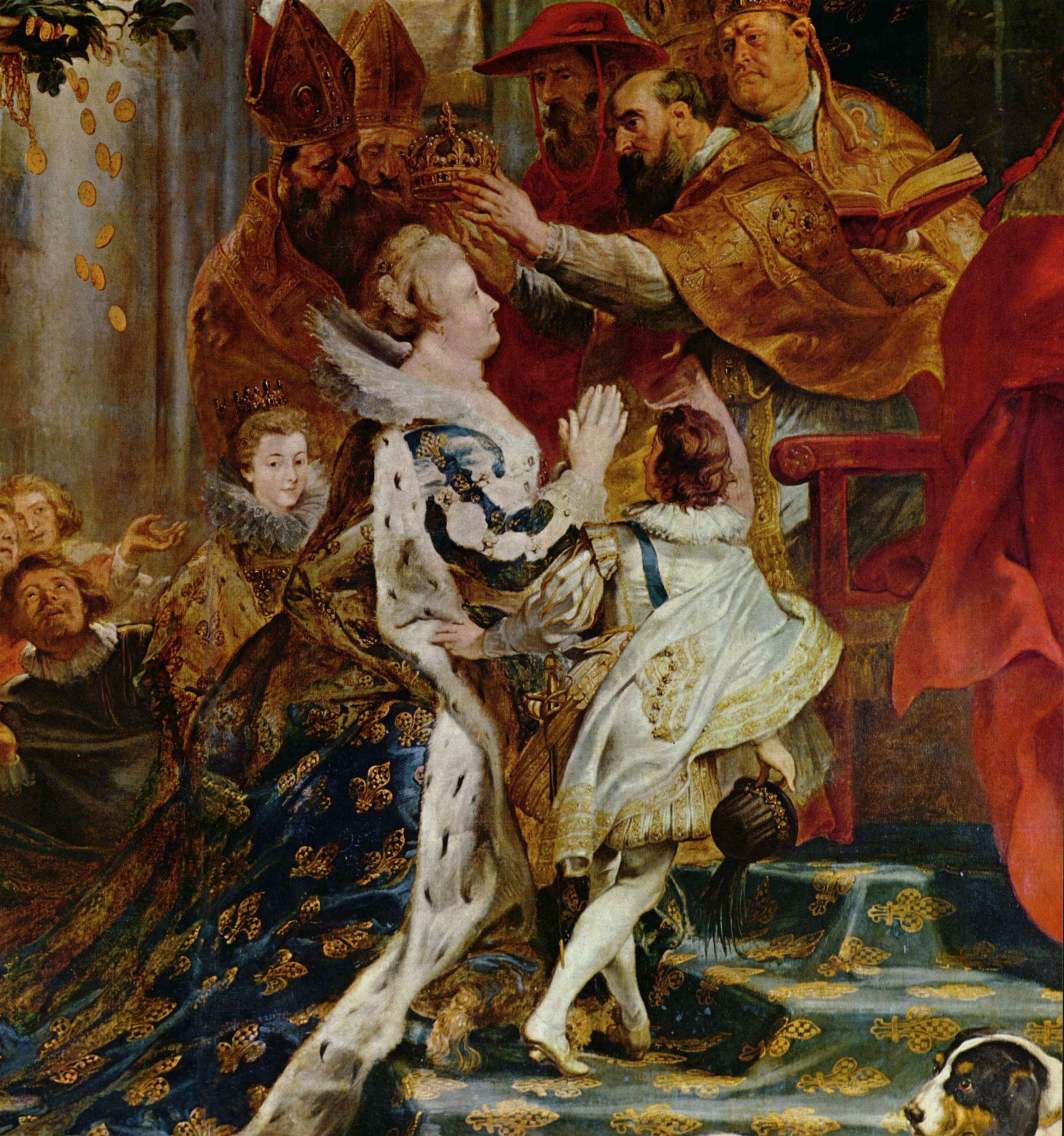The Infanta Anna Maria was born on 22nd
September 1601, the eldest child of Philip III, king of Spain. Brought up at
the Alcazar Palace, in a strongly religious but close family, Anna Maria lost
her mother at the age of eleven, becoming a surrogate mother to her siblings.
In the same year Anna Maria was engaged to marry Louis XIII of France. Her dowry
of 100,000 crowns & expensive jewellery was to be returned to Spain with
her in the event of Louis’ death. At the same time Louis’ sister Elisabeth was
pledged to Anna Maria’s brother the Infante Don Phillipe.
Queen
of France
The wedding, part of the Queen Mother Marie
de Medici’s policy of appeasement towards Spain, did not take place until November
1615. The couple were married by proxy in Burgos & the exchange of brides took
place on the isle of Pheasants between Hendaye & Fuenterrabia. The Bishop
of Luçon, Armand Jean du Plessis de Richelieu, was appointed the new queen’s
Almoner. The new bride was ignored by her husband and France’s new queen Anne
d’Autriche (as she was known to her husband’s subjects) remained fiercely loyal
to country of birth. The homesick queen kept portraits of her Spanish family in
her bathing chamber.
 |
| Coronation of Marie di Medici |
All power remained in the hands of the Queen Mother
& her Italian favourite Concino Concini – husband of her maid. Marie was
able to control her unhappy, sulky son by the force of her personality. It was
not until 1617 that Louis, with the assistance of his favourite, the Duke de
Luynes (Louis was believed to be homosexual in leaning if not in fact), took
control of his kingdom, after the assassination of Concini on 24th
April 1617 (his wife was later beheaded for witchcraft). The Queen Mother was
exiled to Blois.
Louis overturned the pro-Spanish policies of
his mother, but the well-meaning de Luynes was not a capable politician.
However he did try to thaw the relations between Anne & her husband. Anne’s
ladies in waiting were returned home to Spain & French ladies took their
place, including the Duchess de Luynes, who was to become Anne’s greatest friend
& supporter. Anne began to dress in French fashion. She became pregnant
giving birth to a child who only lived a short period in December 1619
The
Queen Mother’s Rebellion
.jpg) |
| Louis XIII |
Marie de Medici escaped from Blois, in 1619.
By the following year she was the figurehead of a rebellion by the nobility
angered by de Luynes incapacity as a politician. In August 1621 Louis had
become reconciled with his mother after her Spanish funded rebels were seen off
by Louis’ troops. The Treaty of Angers that followed amnestied Marie & her
followers. The negotiations were conducted for the Queen Mother by the Bishop
of Luçon.
The royal army marched for Montauban held by
the Huguenots; they had joined Marie’s uprising, but now continued their own
rebellion. In December de Luynes, who had been made Constable of France,
despite having no military experience, died during the siege of Montauban.
Large numbers of the royal troops also died from swamp fever contracted in the
marshes surrounding the city. After three months the siege was abandoned. But
the fight between the crown & the French Huguenots rumbled on.
Within three months of her husband’s death
Marie de Luynes was married to her lover, the Duc de Chevreuse. In May 1622 a
miscarriage caused the rift between Anne & Louis to widen, as she had been
playing with her ladies immediately before the sad event & Louis blamed the
miscarriage on this. Anne’s friend, the Duchess de Chevreuse, was banished from
court for a period as a result.
In April Marie de Medici’s chief counsellor,
Richelieu, was made a cardinal. The Queen Mother was a member of the king’s
council along with the Chancellor – de Brûlart & his son the Foreign
Secretary. The Brûlarts, father & son, managed royal policy making. However
they were up against an opponent of extraordinary political acumen. Even so it
took Cardinal Richelieu another two years before Louis named him his foreign
minister on 29th April 1624, the post for which he had been angling
for so long.
Bibliography
Richelieu and His Age – His Rise to Power – Carl J Burckhardt, 1967
George Allen & Unwin
Cardinal Richelieu and the Making of France – Anthony Levi, 2000
Constable
France in the Age of Louis XIII & Richelieu – Victor L Tapié, 1988
Cambridge University Press
Richelieu and the French Monarchy – CV Wedgewood, 1949 Hodder &
Stoughton
http://en.wikipedia.org

No comments:
Post a Comment
Note: only a member of this blog may post a comment.